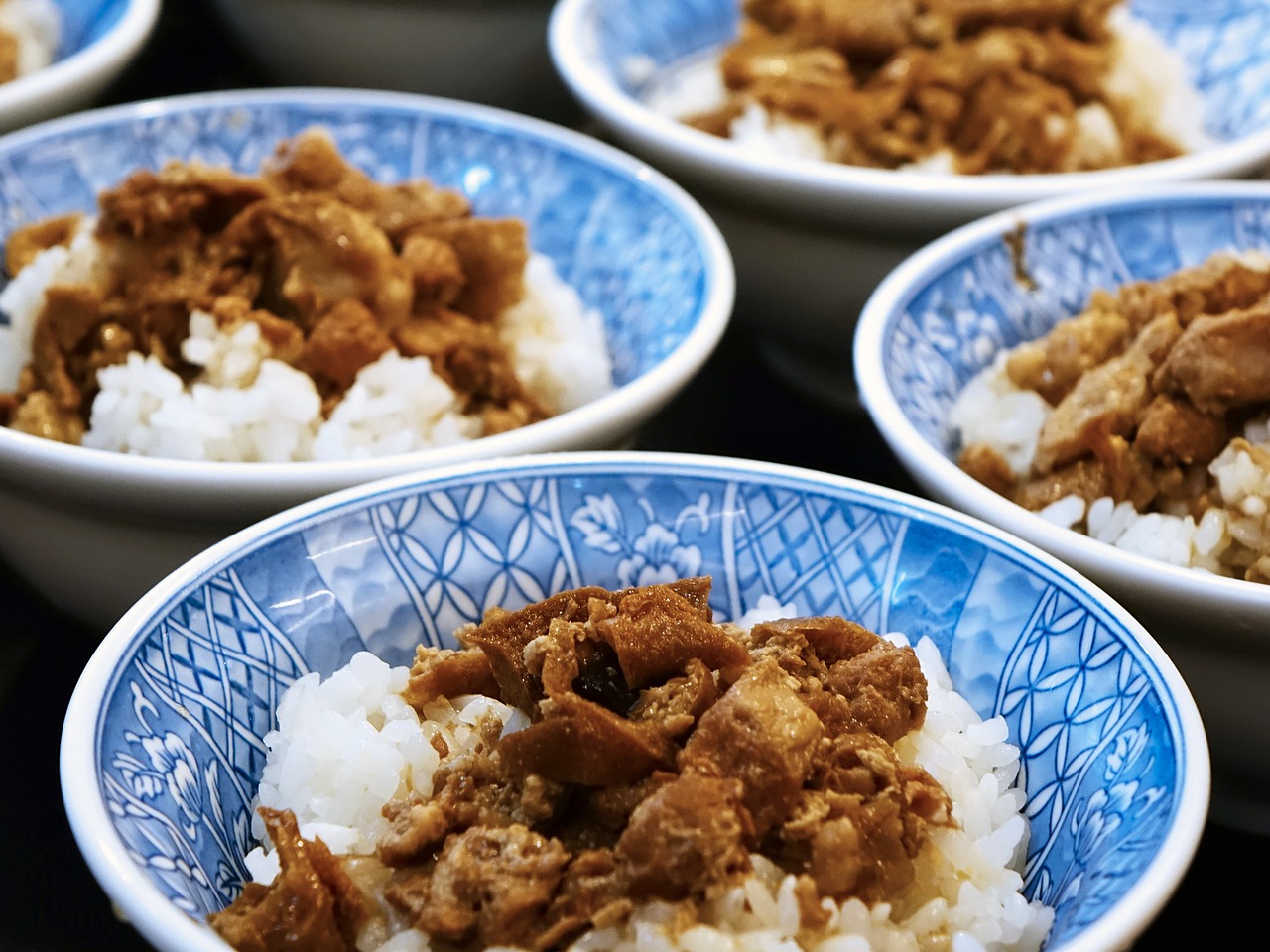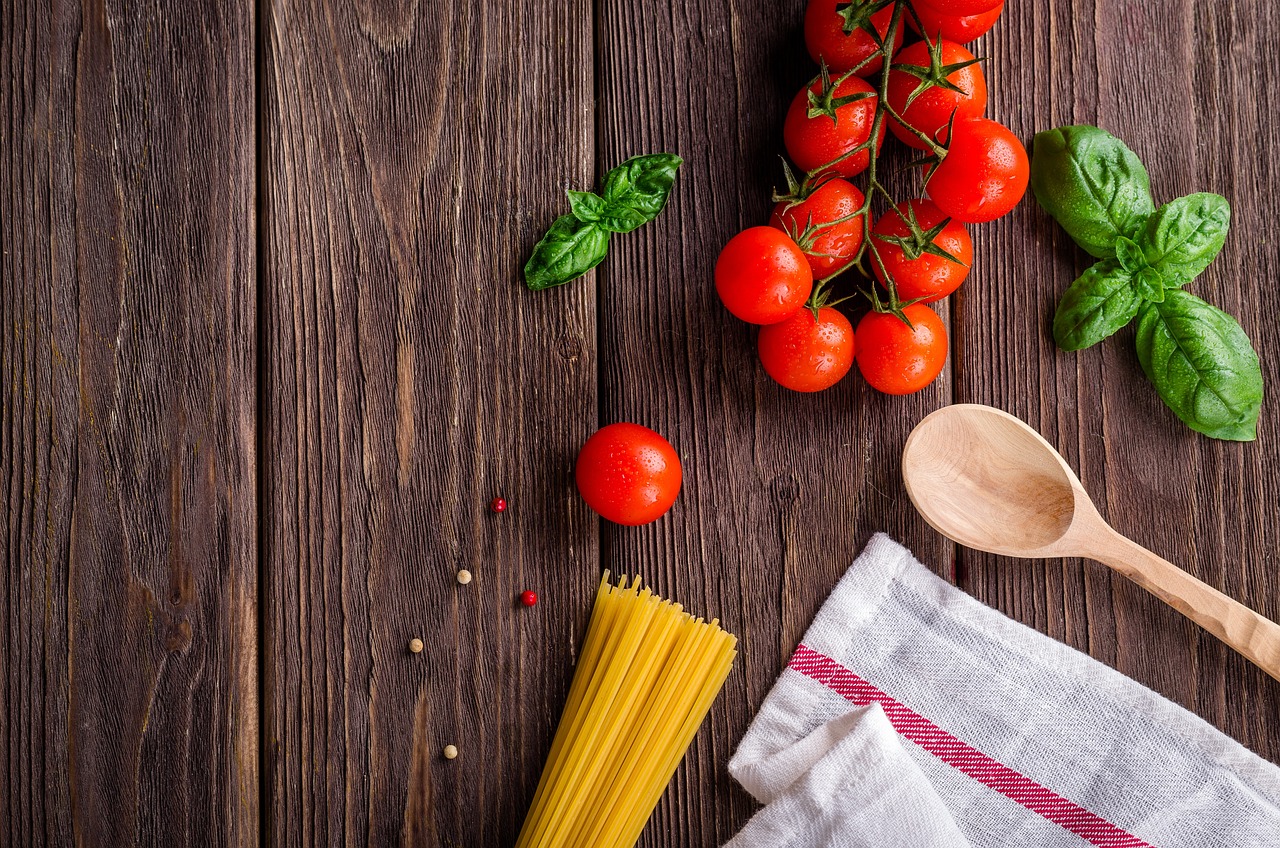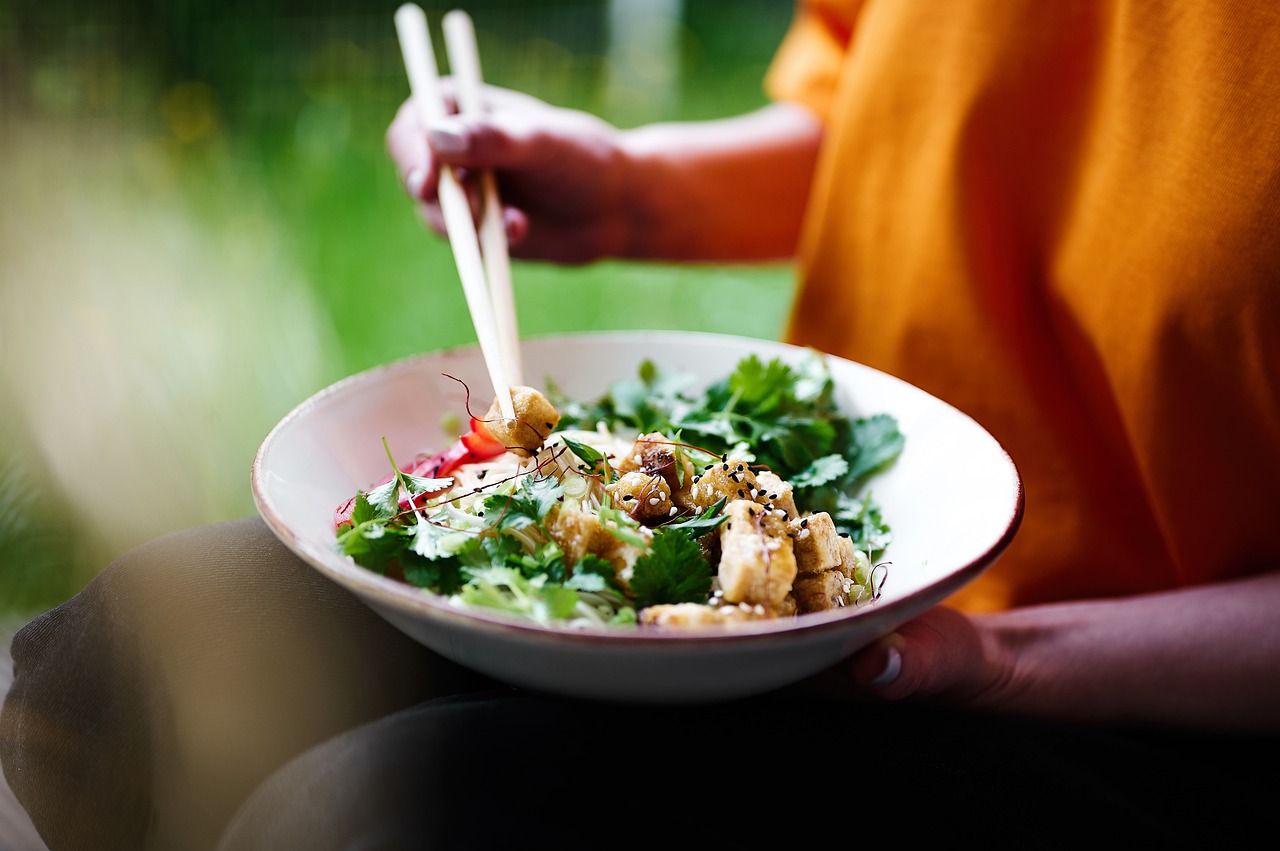How to Make Traditional Turkish Dolma
Are you ready to embark on a culinary journey to master the art of making traditional Turkish dolma? This iconic dish, bursting with flavors and aromas, is a true delight for the senses. Imagine tender grape leaves or vegetables filled with a delectable mixture of rice, herbs, and spices, creating a harmonious blend that will tantalize your taste buds. Let's dive into the step-by-step process of creating this exquisite dish that holds a special place in Turkish cuisine.

Ingredients for Dolma
When it comes to creating the mouthwatering traditional Turkish dolma, the key lies in selecting the finest ingredients that harmonize to deliver a burst of flavors with every bite. The essential components for crafting this culinary delight include fragrant rice, savory ground meat, aromatic onions, crunchy pine nuts, sweet currants, an assortment of flavorful herbs, and, of course, fresh grape leaves or vegetables that serve as the wrapping for this delectable treat.
To achieve the authentic taste and texture of Turkish dolma, each ingredient plays a crucial role in contributing to the overall symphony of flavors. The rice provides a hearty base, while the ground meat adds a savory richness that complements the sweetness of the currants and the crunch of the pine nuts. The onions infuse a subtle depth of flavor, and the herbs elevate the dish with their aromatic essence. Finally, the grape leaves or vegetables not only serve as the vessel for the filling but also impart a unique earthy taste that enhances the overall experience of indulging in this classic Turkish dish.

Preparation of Grape Leaves
When it comes to preparing traditional Turkish dolma, the process begins with the crucial step of preparing the grape leaves. These tender leaves play a vital role in encapsulating the flavorful filling and imparting a distinct taste to the dish. To ensure the grape leaves are pliable and ready to be filled, they need to undergo a process known as blanching.
Blanching grape leaves involves briefly immersing them in boiling water to soften their texture and remove any bitterness. This step not only enhances the overall taste of the dolma but also makes the leaves easier to work with when filling and rolling them.
Before blanching the grape leaves, it is essential to carefully wash them to remove any impurities or residue. Once cleaned, the leaves are submerged in boiling water for a short period, typically around 1-2 minutes, depending on their thickness. The goal is to achieve a delicate balance where the leaves are soft enough to be rolled but still retain their structural integrity.
After blanching, the grape leaves are promptly removed from the boiling water and transferred to a bowl of cold water or placed under running water to stop the cooking process. This rapid cooling helps preserve the vibrant green color of the leaves and prevents them from becoming overly soft or mushy.
Once the grape leaves have been blanched and cooled, they are carefully patted dry with a clean kitchen towel to remove excess moisture. This step is crucial to ensure that the filling adheres well to the leaves and prevents any sogginess during the cooking process.
With the grape leaves prepared and ready to be filled, you are now one step closer to creating the delectable Turkish dolma that is sure to delight your taste buds with its harmonious blend of flavors and textures.

Filling and Rolling Dolma
When it comes to preparing traditional Turkish dolma, the process of filling and rolling the grape leaves is a crucial step that requires precision and care. The art of dolma-making involves creating neat parcels filled with a flavorful mixture of rice, ground meat, onions, pine nuts, currants, and various herbs. Each dolma is like a small culinary gift, waiting to be unwrapped and savored.
To start filling the grape leaves, place a single leaf flat on a clean surface, shiny side down. Trim off the stem and spoon a small amount of the rice and meat mixture onto the center of the leaf. Carefully fold the sides of the leaf over the filling, then roll it up tightly from the bottom to the top, ensuring a secure and compact shape. The key is to roll the dolma firmly but gently, like wrapping a delicate present.
As you continue filling and rolling the grape leaves, arrange the dolma snugly in a pot, making sure they are packed closely together to prevent them from unraveling during cooking. This not only helps the dolma retain its shape but also allows the flavors to meld together beautifully as they simmer or bake.
For a visually appealing presentation, consider arranging the dolma in a concentric pattern in the pot, creating a stunning display of neatly rolled parcels. This not only enhances the aesthetic appeal of the dish but also ensures even cooking and flavor distribution.
Once all the dolma are neatly nestled in the pot, add a flavorful broth or sauce to enhance the taste and keep the dolma moist during cooking. Whether you choose to simmer the dolma on the stovetop, bake them in the oven, or opt for a quicker pressure cooking method, the goal is to achieve tender, flavorful dolma that are bursting with delicious fillings.

Cooking Methods
When it comes to cooking traditional Turkish dolma, there are various methods you can choose from to achieve that perfect balance of flavors and textures. One popular method is simmering on the stovetop, which allows the dolma to slowly cook in a flavorful broth, infusing the grape leaves with all the delicious juices.
Another option is baking in the oven, which results in a slightly different texture as the dolma gets a bit crispy on the edges while remaining tender inside. This method is great for those who prefer a bit of crunch in their dolma.
For those looking to save time without compromising on taste, pressure cooking is a fantastic choice. Using a pressure cooker can significantly reduce the cooking time while still ensuring that the dolma turns out perfectly cooked and bursting with flavor.
Each cooking method offers a unique twist to the traditional dish, allowing you to experiment and find the technique that best suits your preferences. Whether you enjoy the slow simmering process on the stovetop, the crispy edges from baking in the oven, or the quick and efficient pressure cooking method, the end result is always a delicious and satisfying plate of Turkish dolma.

Serving and Presentation
When it comes to serving and presenting traditional Turkish dolma, attention to detail can truly elevate the dining experience. Picture this: a beautifully arranged platter of dolma, each parcel glistening with flavor, beckoning you to take a bite. The key to a stunning presentation lies not only in the taste but also in the visual appeal.
One popular way to serve dolma is as a standalone dish, allowing its intricate flavors to take center stage. Arrange the dolma neatly on a decorative plate, garnished with sprigs of fresh herbs for a pop of color. The vibrant hues of the grape leaves or vegetables wrapping the filling create a visually appealing contrast, inviting diners to indulge.
For a more casual setting or as part of a larger meal, dolma can also be served as an appetizer. Imagine a platter of bite-sized dolma, perfect for sharing and sampling alongside other Turkish delights. The small, compact parcels make for an ideal finger food, allowing guests to savor each flavorful bite effortlessly.
When it comes to presentation, a squeeze of fresh lemon juice adds a zesty kick that enhances the overall taste of the dish. The citrusy brightness cuts through the richness of the filling, balancing the flavors harmoniously. Additionally, a drizzle of quality olive oil over the dolma not only enhances the taste but also adds a luxurious sheen, making the dish even more enticing.
To take the presentation of dolma a step further, consider serving it with a side of creamy yogurt or tangy tzatziki sauce. The cool, refreshing dip complements the warm flavors of the dolma, creating a delightful contrast that tantalizes the taste buds. A sprinkle of sumac or Aleppo pepper on top adds a final touch of sophistication, hinting at the exotic spices within.

Variations and Customizations
When it comes to traditional Turkish dolma, there are endless possibilities for variations and customizations that can elevate this beloved dish to new heights of flavor and creativity. One popular variation is to experiment with different fillings, such as incorporating a mix of ground lamb and beef for a richer taste, or opting for a vegetarian version with a medley of colorful vegetables and aromatic spices.
For those looking to add a unique twist to their dolma recipe, consider using alternative wrapping vegetables like zucchini, eggplant, or cabbage leaves instead of traditional grape leaves. Each option brings its own distinct flavor profile and texture, allowing you to tailor the dish to your preferences and culinary style.
If you're feeling adventurous, explore fusion variations by infusing dolma with ingredients from other cuisines, such as adding Middle Eastern spices for a bold kick or incorporating Mediterranean herbs for a fresh and vibrant twist. The beauty of dolma lies in its versatility, inviting you to get creative in the kitchen and experiment with different flavor combinations.
Furthermore, don't hesitate to customize the size and shape of your dolma parcels to suit your presentation preferences. Whether you prefer small bite-sized dolma for appetizers or larger, heartier portions for a main course, the choice is yours. Get playful with the presentation, arranging the dolma in intricate patterns or serving them family-style for a communal dining experience.

History and Cultural Significance
Delve into the rich tapestry of history and cultural significance that surrounds the beloved Turkish dish, dolma. Originating from the Ottoman Empire, dolma has a storied past intertwined with traditions and celebrations. The name "dolma" itself comes from the Turkish word "dolmak," meaning "to be stuffed" or "to be filled." This encapsulates the essence of the dish, where grape leaves or vegetables are lovingly filled with a tantalizing mixture of rice, meat, herbs, and spices.
Throughout history, dolma has been more than just a dish; it has been a symbol of hospitality and togetherness in Turkish culture. Often prepared during special occasions and family gatherings, the act of making dolma is a communal experience that brings people together. Each dolma parcel crafted with care represents a shared moment of joy and connection, passed down through generations.
Furthermore, dolma holds a special place in Turkish culinary heritage, with regional variations and family recipes adding layers of complexity and flavor to this timeless dish. From the shores of the Bosphorus to the bustling streets of Istanbul, dolma is a culinary ambassador that reflects the diversity and richness of Turkish cuisine.
Moreover, the cultural significance of dolma extends beyond the dining table. In Turkish folklore and traditions, dolma is often associated with good luck and prosperity. It is believed that serving dolma to guests brings blessings and abundance to the household, making it a cherished part of Turkish hospitality.
As you savor each bite of traditional Turkish dolma, you are not just tasting a delicious dish; you are experiencing a piece of history and culture that has stood the test of time. The flavors and aromas of dolma carry with them the stories of generations past, making each mouthful a journey through the heart of Turkey.

Tips and Tricks
When it comes to mastering the art of making traditional Turkish dolma, attention to detail is key. Here are some expert tips and tricks to elevate your dolma-making skills and ensure a truly delightful culinary experience:
1. Selecting the Best Ingredients: Choose high-quality ingredients, such as fragrant fresh herbs, tender grape leaves, and flavorful ground meat, to enhance the taste of your dolma.
2. Preparing the Filling: Ensure the rice and meat filling is well-seasoned with a blend of aromatic spices, pine nuts, and currants for a burst of flavors in every bite.
3. Rolling Techniques: Master the art of rolling grape leaves tightly but not too tightly to prevent the filling from spilling out during cooking, creating perfectly shaped dolma parcels.
4. Cooking Methods: Experiment with different cooking methods to find your preferred way of preparing dolma, whether it's simmering on the stovetop for a slow infusion of flavors or pressure cooking for a quicker meal.
5. Flavor Enhancements: Add a squeeze of fresh lemon juice or a drizzle of olive oil before serving to brighten the flavors of the dolma and elevate its taste profile.
6. Garnishing and Presentation: Garnish your dolma with a sprinkle of fresh herbs, such as parsley or mint, for a pop of color and a refreshing finish that enhances the visual appeal of the dish.
7. Storage and Reheating: Store any leftover dolma in an airtight container in the refrigerator and reheat gently in the microwave or oven to enjoy the flavors again the next day.
8. Experimentation is Key: Don't be afraid to get creative with your dolma recipe by incorporating your favorite ingredients or trying out new flavor combinations to personalize this classic dish.
By following these tips and tricks, you can elevate your dolma-making skills and create a dish that is not only delicious but also a true reflection of the rich culinary heritage of traditional Turkish cuisine.
Frequently Asked Questions
- What is dolma?
Dolma is a traditional Turkish dish consisting of a flavorful mixture of rice, herbs, and spices, wrapped in grape leaves or vegetables.
- What are the key ingredients for making dolma?
The essential components for authentic Turkish dolma include rice, ground meat, onions, pine nuts, currants, various herbs, and fresh grape leaves or vegetables.
- How do you prepare grape leaves for dolma?
To prepare grape leaves for dolma, blanch them to ensure they are tender and ready to be filled with the savory rice and meat mixture.
- What are the different cooking methods for dolma?
You can cook dolma by simmering on the stovetop, baking in the oven, or pressure cooking to achieve the perfect texture and taste.
- How can dolma be served and presented?
Dolma can be elegantly plated and served as a standalone dish, appetizer, or part of a larger meal, garnished with fresh herbs and a squeeze of lemon.
- Are there variations and customizations for dolma?
Yes, you can explore creative variations by using different fillings, alternative wrapping vegetables, or vegetarian options for a unique twist on the classic dolma recipe.
- What is the history and cultural significance of dolma?
Dolma holds a rich history and cultural significance in Turkish cuisine, with origins tracing back and symbolic importance in traditional gatherings and celebrations.
- What are some expert tips for making delicious dolma?
Expert tips include selecting the best ingredients, achieving the ideal balance of flavors and textures, and mastering the art of filling and rolling dolma for an authentic and delicious dish.



















